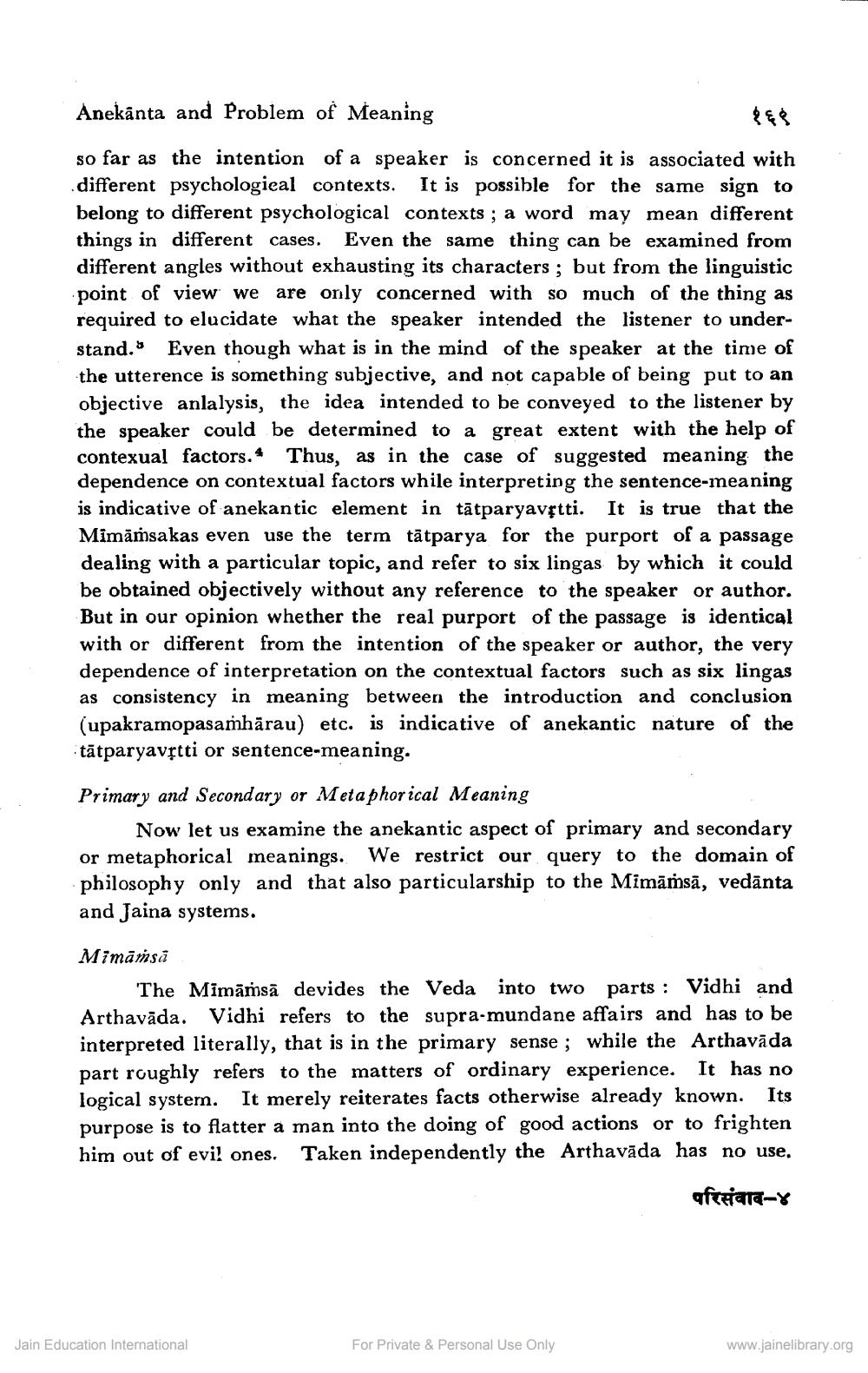Book Title: Anekanta Problem Of Meaning Author(s): S M Shaha Publisher: Z_Jain_Vidya_evam_Prakrit_014026_HR.pdf View full book textPage 3
________________ Anekānta and Problem of Meaning so far as the intention of a speaker is concerned it is associated with different psychological contexts. It is possible for the same sign to belong to different psychological contexts; a word may mean different things in different cases. Even the same thing can be examined from different angles without exhausting its characters; but from the linguistic point of view we are only concerned with so much of the thing as required to elucidate what the speaker intended the listener to understand. Even though what is in the mind of the speaker at the time of the utterence is something subjective, and not capable of being put to an objective anlalysis, the idea intended to be conveyed to the listener by the speaker could be determined to a great extent with the help of contexual factors. Thus, as in the case of suggested meaning the dependence on contextual factors while interpreting the sentence-meaning is indicative of anekantic element in tātparyavřtti. It is true that the Mimāṁsakas even use the term tātparya for the purport of a passage dealing with a particular topic, and refer to six lingas by which it could be obtained objectively without any reference to the speaker or author. But in our opinion whether the real purport of the passage is identical with or different from the intention of the speaker or author, the dependence of interpretation on the contextual factors such as six lingas as consistency in meaning between the introduction and conclusion (upakramopasamhārau) etc. is indicative of anekantic nature of the tātparyavštti or sentence-meaning. Primary and Secondary or Metaphorical Meaning Now let us examine the anekantic aspect of primary and secondary or metaphorical meanings. We restrict our query to the domain of philosophy only and that also particularship to the Mimāṁsā, vedanta and Jaina systems. Mimāṁså The Mimāṁsā devides the Veda into two parts: Vidhi and Arthavāda. Vidhi refers to the supra-mundane affairs and has to be interpreted literally, that is in the primary sense; while the Arthavada part roughly refers to the matters of ordinary experience. It has no logical system. It merely reiterates facts otherwise already known. Its purpose is to flatter a man into the doing of good actions or to frighten him out of evil ones. Taken independently the Arthavāda has no use. परिसंवाद-४ Jain Education International For Private & Personal Use Only www.jainelibrary.orgPage Navigation
1 2 3 4 5 6 7 8 9 10
